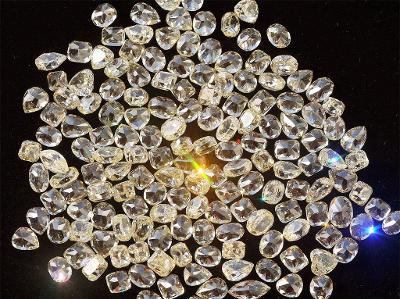
The Gems and Jewellery Export Promotion Council (GJEPC) has taken a dig at the gemological laboratories making public the test results of the synthetic diamonds detected during testing.

The Gems and Jewellery Export Promotion Council (GJEPC) has taken a dig at the gemological laboratories making public the test results of the synthetic diamonds detected during testing.
Industry leaders believe that the diamantaires are lab testing their stocks to know whether there is mixing of the lab-grown diamonds, in order to uphold the consumer confidence. It is not right, as per the policy for the gemological laboratories make the public disclosure of the same.
Diamantaires are upset after the Gemological Institute of America (GIA) revealed about the detection of an unusually large number of undisclosed synthetic diamonds mixed in with natural melee diamonds, according to US-based Rapaport group.
The report suggested that GIA detected 101 synthetic stones from a parcel of 323 melee diamonds with an average size of 0.014 to 0.015 carats, submitted by the trader based in Mumbai and having sourcing links with Surat.
The goods had been submitted to the GIA's Melee Analysis Service, launched in December of last year and has regularly identified small quantities of undisclosed synthetic melee diamonds in some parcels submitted for analysis.
Talking to TOI, GJEPC's regional chairman, Dinesh Navadiya said, "It is not the policy for the gemological laboratories to reveal the detection of synthetic diamonds from the parcels given for checking. The diamantaries are giving the parcels to instil confidence that the goods they are purchasing are free from lab-grown diamonds. Thus, the laboratories must refrain from making the test results public."
Navadiya added, "We have strongly represented the issue to the GIA and other laboratories. The diamond industry is aware of the threats of undisclosed mixing of synthetic diamonds with natural diamond parcels. And this is the reason, why the diamantaires prefer testing their stones before selling it to the buyers in the international market."
Fewer cases of undisclosed mixing have been reported recently as more testing facilities and detection machines have come to market, Praveenshankar Pandya, chairman of India's Gem & Jewellery Export Promotion Council (GJEPC), said at the World Federation of Diamond Bourses' Presidents' meeting last month.
The first major discovery of undisclosed synthetics was in May 2012, when several hundred CVD diamonds were sent to the International Gemological Institute (IGI) in Antwerp and Mumbai to be certified as natural diamonds.